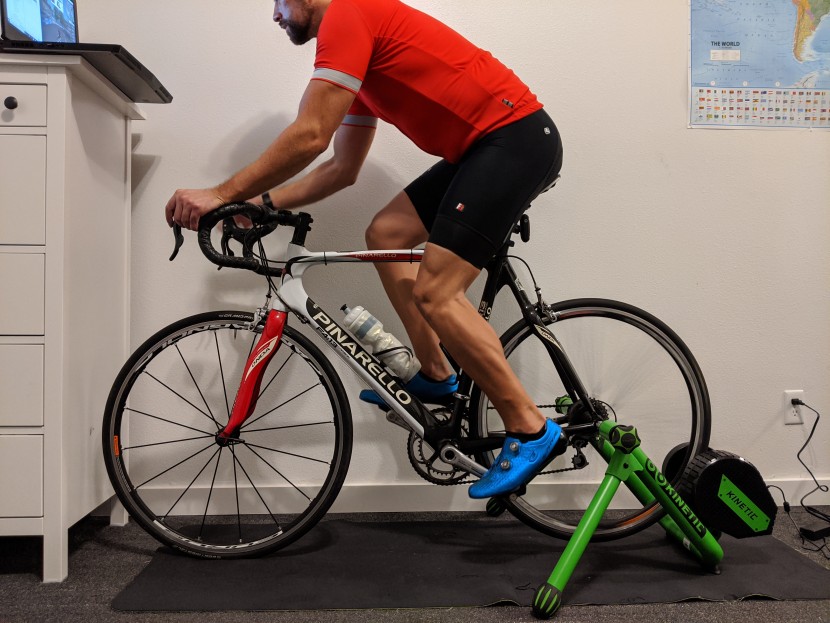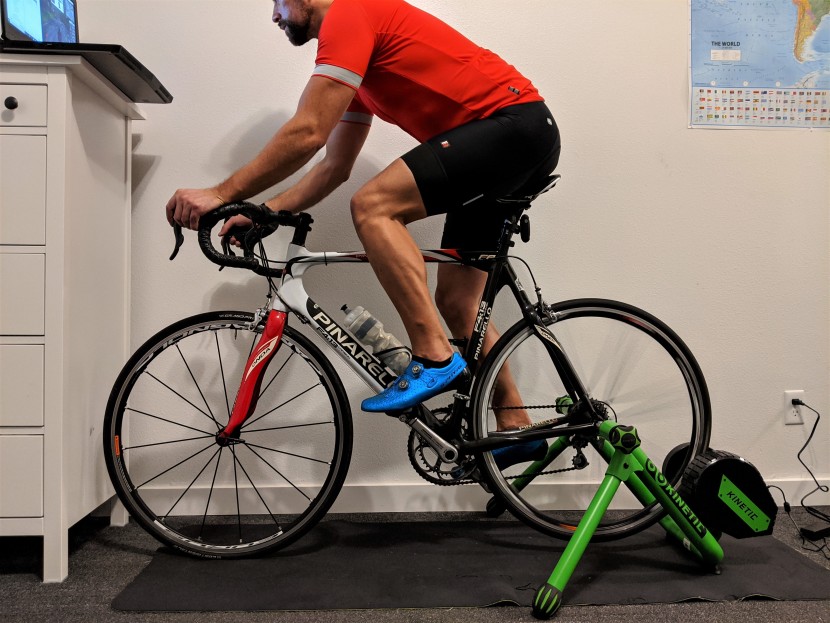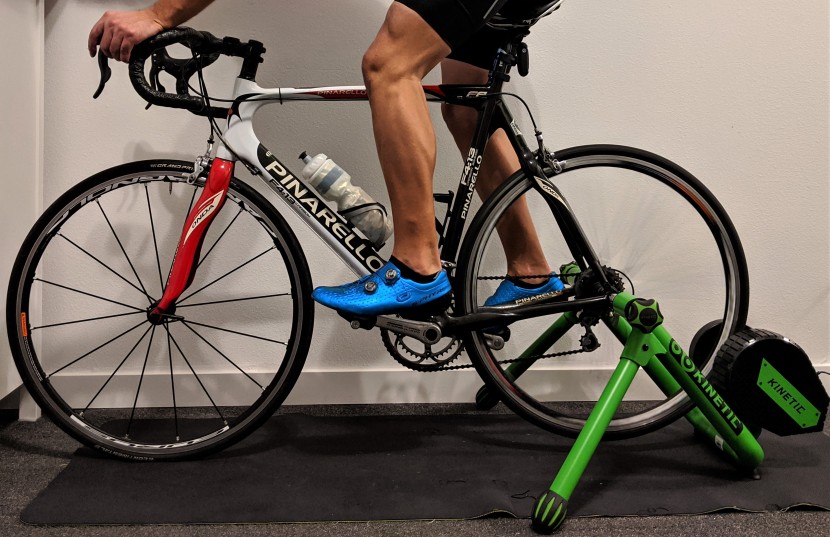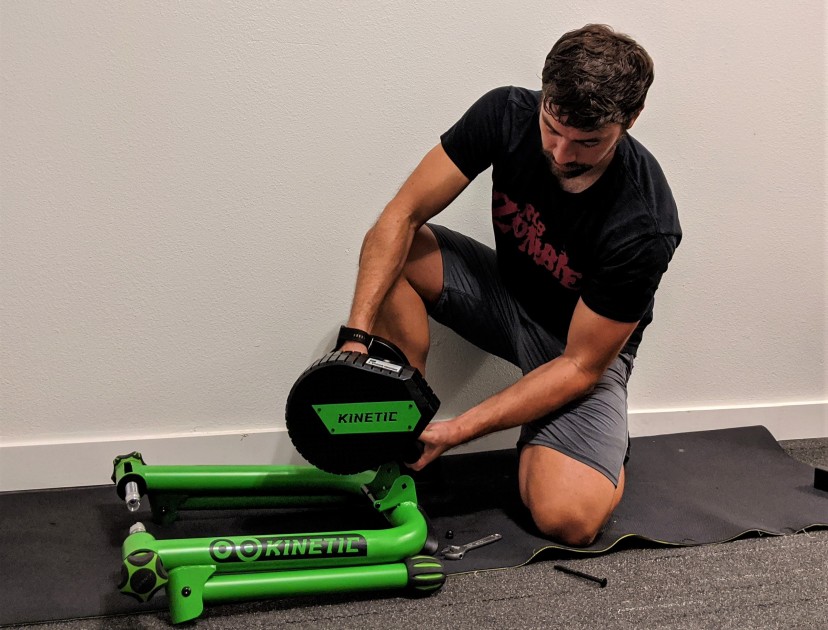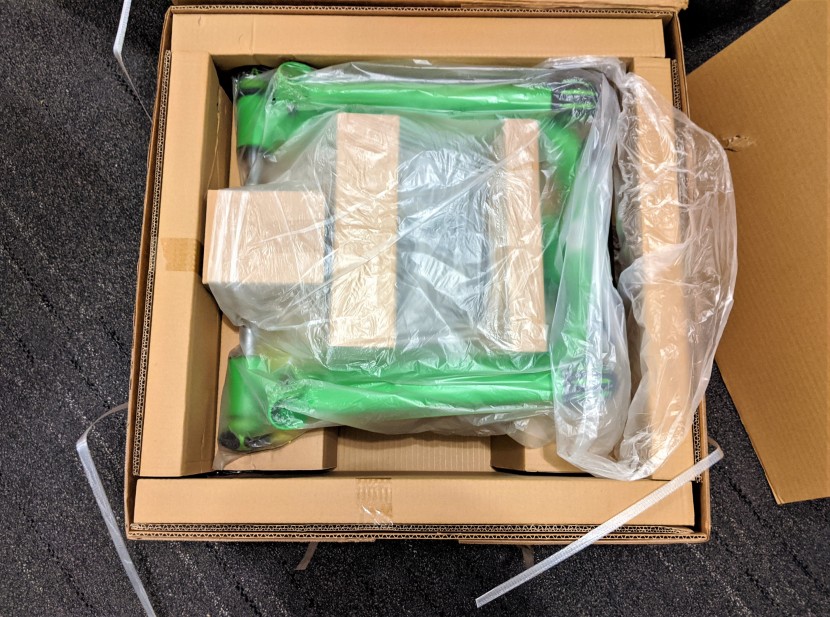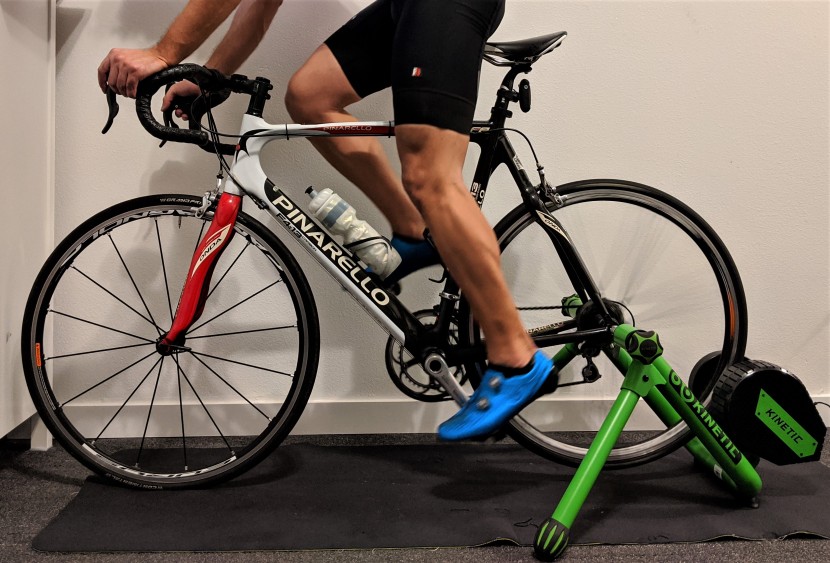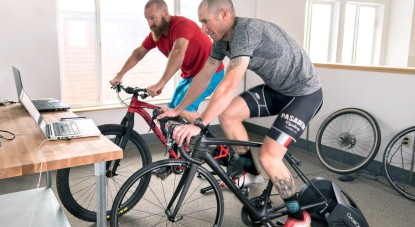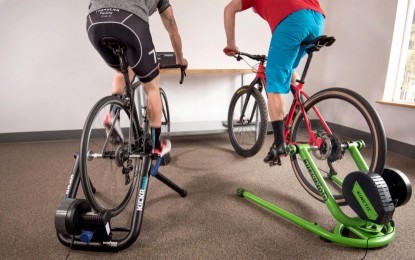Kinetic Road Machine Control Review
Our Verdict
Our Analysis and Test Results
The Road Machine Control is an excellent tire drive trainer with a lower price point than other direct dive models. It offers smart features that will easily pair with your training apps.
Connectivity and Power Accuracy
The Road Machine Control pairs with devices using Bluetooth Smart and ANT+. This is a big improvement over other smart models Kurt Kinetic has offered in the past, which were limited to Bluetooth only. Now with the ANT+ capability, you can pair to multiple devices and have a backup in case one of the other protocols is down on your training platform, as happened recently with Zwift and Bluetooth. Those of us who run ANT+ didn't notice.
Out on the road (virtual road, anyway), we were quite happy with the dependability of communication across devices. We didn't find any issues, nor could we find problems from other users.
Kurt Kinetic claims that their accuracy is +/- 3%, but we found that it was usually off by 5-10 watts when rolling between 100 and 200 watts (and fewer watts at 50 watts and more watts at 250 or 300). It was generally up to about 5 percent off. This is consistent with most other tire drive trainers. It's a little more challenging to get good data from drums and tires than drivetrains and power meters, which most direct drives tend to use.
Despite the lower accuracy, the Road Machine Control is still accurate enough most of the time to allow you to track your performance reasonably. That's especially true if you tend to do a lot of endurance riding. The accuracy problems mostly come about in brief spots here and there where you need big shifts in power or you're doing a lot of close competition with other riders where a few watts really will make a difference and get you dropped (or your buddy). Still, most riders looking to get into the virtual training world without making their bank account cry will be happy with this trainer.
Road Feel
With the Road Machine Control, you're getting a step up from your traditional tire drive trainer. It retains the cost and simplicity of a standard tire drive trainer but adds the smart control features of a higher-end direct drive trainer.
You can interact with training programs like Zwift and others as a smart control trainer. As course terrain or training session requirements change, so does the trainer's resistance. As you go up hills, you'll feel your trainer adjusting to meet that simulation, and as you come back down the other side, you'll feel it drop off.
The lower-tech side of this trainer is simply that your tire is rolling against something, and you're using the same cassette you would out on the road (unless you're swapping to a training wheel for your trainer, which is…not a bad idea). To some extent, that preserves some of the natural rolling feel you're used to. It's slightly offset by the fact that your bike is locked into the trainer's frame, so it's super stable, now sapping away some of the road noise you're used to feeling.
Its 12-pound flywheel also does a great job of simulating the road. It's not as robust as some direct drive trainers, but they're also 10-20 pounds heavier and hundreds of dollars more. For its price, feel, and ease of setup, it's hard not to be pleased as punch with the Road Machine Control.
Design
For this measure, we primarily look at two aspects of design. The first is the physical design, where we consider how practical and user-friendly the trainer is. The second is the technological design, where we consider software performance and how well the trainer is integrated into 3rd party apps.
As we've mentioned, the frame is pretty darn solid. For that reason, Kinetic has a lifetime warranty on the frame. Good luck hurting it. The electronic resistance unit is a little more complicated, so it has a one-year warranty, which is still pretty good. We couldn't find any legit complaints of either the frame or the resistance unit having defects or failures. We certainly didn't see any signs of it.
It's also the most straightforward thing out there — one knob to adjust the tension on the rear wheel and two knobs to secure the axle. There's not much to it, and we like it that way. You don't need any special tools or expertise to operate it. It fits 22 through 29-inch wheels, so almost any frame will work. If you use a thru-axle, you'll need one that fits into the cups on the trainer frame's fasteners. Kinetic sells one that will work on any tire drive bike trainer — the Kinetic Traxle.
Its 12-pound flywheel is the right balance for this trainer. It's sufficient to simulate good road inertia but not too heavy to force you to lock your wheel down and slip every time you accelerate. It's the ideal weight for a tire drive trainer. The resistance unit does a solid job of controlling it and simulating the changes in terrain or training segments. It can simulate grades up to 10% and let you kick out 1800 watts at 30 miles per hour. That's pretty good for such an affordable tire drive trainer. It can't quite match the performance of the direct-drive competition here, but again, it's quite good for a tire-drive model.
The only area we wish were different is in power. It'd be nice if it could operate all the fancy stuff (we mean power and data) off of the energy you put into the drum and then just turn off 5 or 10 seconds after you stop pedaling.
On the tech side, the Road Machine Control does a good job for what it is - a mid-range bike trainer that tries to bring high-end features to a more affordable price range. You get the two major communication protocols for control, Bluetooth FTMS and ANT+ FE-C, so you have a backup and choices for speed (Bluetooth) and multiple connections (ANT+). You get smart data and resistance control. And you get all the good outlets for training, including Kinetic Fit, Zwift, TrainerRoad, Rouvy, Kinomap, Sufferfest, and Fulgaz, among others. It's listed as a Zwift Certified trainer, so compatibility is pretty solid.
Our biggest concern here is what we've raised elsewhere in the review, and they're about what you'd expect for an affordable mid-level trainer. The power data coming out of it isn't as accurate as it could be, though it is workable. We did also have a few power drops. That's an annoyance but not a deal-breaker for most folks. We hope future models can dial it in a little more. We also had a little trouble getting phones to pair on a few rides. All in all, this is what you would expect from this sort of trainer. It's a versatile, affordable, simple-to-use trainer. It has a few kinks, but nothing that doesn't have a workaround or can't be easily ignored.
Setup
The Road Machine Control is very simple to set up and get going. If you put your phone down for a little while, you should be able to go from an unopened box to rolling in 20 minutes - tops.
After unboxing and pulling everything out, you'll need to attach the resistance unit with two bolts (one has a knob, and you'll use it to adjust the tension on your tire), a nut, and then a wrench, which you'll need to have on hand. It's pretty darn easy.
Then you'll just unfold the legs of the trainer, throw the new skewer they provided onto your bike, set the bike up in the two clamps and tighten those, then tighten the resistance unit up against your tire, open your training program, plug the trainer in and pair your machine to your device, then you're rolling.
But keep in mind, this is just rolling. For smart control trainers, you need to do a bit of calibration. The best practice is to warm the machine up for 10 minutes, then you can do a quick calibration, and you're off to the races with more accurate data.
Kinetic suggests that you ought to do a quick calibration every time you ride, but saving your previous calibrations in your training program could be enough to bypass calibration every time you ride - basically, if you don't suspect your numbers are off. It's still a good idea to do it every week or two. Once a month at the least. They also note that you can do a calibration on a cold trainer and bypass the warm-up; just shoot for 6 seconds instead of 7 in the calibration. They said it shouldn't impact the accuracy.
Portability
This measure looks at the physical and practical aspects of moving a trainer around the house and taking it out on the road. We don't all have a support team, so one of the points of a trainer is that it be easy to move around and manage yourself so you can train anywhere. Try storing a stationary bike in the back of a closet or pulling it out of your trunk to warm up before a race.
At some point, you might decide you like the Road Machine Control so much and that you're having such a good time with it that you want to take it out traveling so you can maintain your fitness or warm-up before a race. It's not bad for that, but you'll need a power source to get any decent use. If you're in hotels near a plug, it's probably the perfect trainer for that. It's lighter than the direct-drive trainers, coming in at just 28 pounds. That makes it pretty ideal for sneaking into your bike case. You can even pull the resistance unit off and throw it in your suitcase or vice versa, depending on how big your case is and how well you can strap everything down.
Its shape is also great for taking it around. More robust trainers, especially direct drive trainers, are basically big, heavy boxes. Tire drive trainers can usually be broken down into a U-shape with a bulky resistance unit at the center. The Kinetic is no different, except that it's among the sturdiest trainers out there, so there's less concern about knocking it around in transit, the back of a closet, garage, or workshop. And as we mentioned, it's really simple to remove the resistance unit (and reinstall), so any Tetris-type issues should be easily solved by removing that.
The Kinetic's versatility here makes it one of the best bike trainers for taking out on the road and just getting it shifted from place to place in your home. It's a good choice if you do a lot of that sort of thing.
Should You Buy the Kinetic?
Yes. If you aim to find a reasonably priced smart bike trainer, then the Kinetic is the one for you. This product is one of the easiest smart trainers to set up and offers great performance for the price. It is also relatively portable and suited to life “on the road” indoors. We love that this option provides the simplicity of a tire drive trainer with some smart control features you typically find in premium direct drive trainers.
What Other Bike Trainer Should You Consider?
If budget plays a role in your decision-making process for at-home training equipment, then it is hard to find a better choice in this lineup that brings lower price together with better performance. However, depending on how tight your budget is, the Kinetic could be outside your price range. The Zwift Hub is a direct drive with almost the same price point, more features, and better performance. However, if you prefer a tire drive, the Saris Fluid 2 could come in, as it can save you almost two hundred dollars and still provide the performance you need to do the job. It is slightly more portable and earned similar performance results across the board with just a slight dip for its connectivity.



